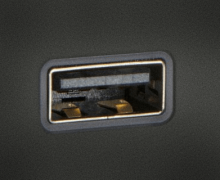
Introduction
This case study presents how an automotive supplier was able to automate firmware and OS provisioning and End-of-Line (EOL) functional final assembly testing using Acroname industrial USB hubs and switches and their USB Host switching features. This automation resulted in reduced cycle times, less manual intervention and fewer errors while supporting a mix of software versions on the same production line.
EOL Functional Testing is the final stage in the production process where a product is tested to verify that all systems and components are working as intended. During this stage, devices are typically provisioned with their test or final firmware and software.
The Problem: Managing Multiple Firmware Images In End Of Line Testing
A supplier of in-vehicle compute modules wanted to automate EOL testing and firmware provisioning over USB. The original process involved:
- Connecting the compute module (DUT) to the test PC for control and telemetry.
- Connecting an external SSD with the correct firmware and OS image.
- Booting the compute module from the SSD to install the firmware and OS

Figure 1: Manual SSD image updating
Since the compute modules were to be integrated into a range of vehicle models and trims, the SSD image needed to be updated for the destination vehicle. This update process was manual, requiring the SSD to be connected to the test computer and the new image copied over, introducing the risk of operator error.
Solution: USB Host Switching With USBHub3c
Acroname’s USBHub3c industrial USB Hub supports USB host switching. With host switching, the hub can assign a host-capable device on any port to become the upstream host, allowing all connected peripherals to be switched to one of up to five hosts. Switching can occur automatically by port priority, or it can be controlled via the hub’s dedicated Control Port.
For this application, a script on the Test PC directed USBHub3c (via API) to select the vehicle compute module as the host, enabling the module to boot from the SSD. When the production line switches to provisioning modules for a new target vehicle, the Test PC directs USBHub3c to select the Test PC as the new USB host. The PC then mounts the SSD, and copies over the new image (Figure 2).

Figure 2: Automatic host switching solution
Reducing changeover times with multiple SSDs
Changeover times can be further minimized by selecting among multiple dedicated SSD images, each supporting a different vehicle target. USBHub3c can enable and disable individual ports, so the vehicle compute module will only detect the enabled SSD as connected.
In the configuration shown in Figure 3, a single USBHub3c can support up to four SSDs while maintaining dual host switching. More SSDs can be easily added by cascading additional Acroname hubs.

Figure 3: Automatic host switching with multiple SSD images
Conclusion
Host switching improved the supplier’s EOL testing and provisioning by removing manual plug-unplug steps involved in moving storage devices between hosts. By implementing an automated host switching solution with USBHub3c, the supplier improved cycle times and reliability while maintaining support across multiple target vehicles.
Add New Comment